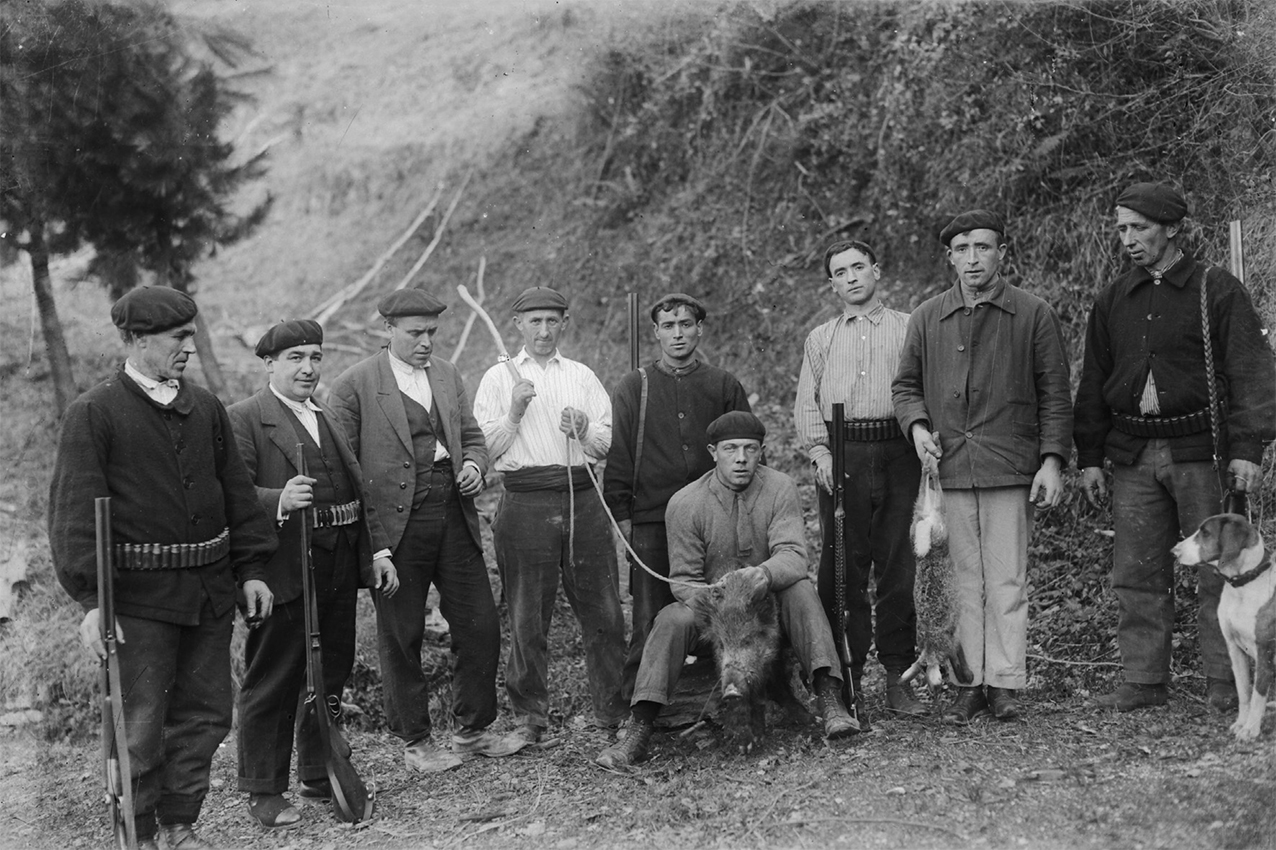Basque ethnography at a glance

Group of hunters. Felipe Manterola Collection. Labayru Fundazioa Photographic Archive.
The Urdaibai estuary, formerly known as the Mundaka or Gernika estuary, is a natural reserve at the mouth of the river Oka, which originates in the neighbourhood of Zugastieta in the municipality of Muxika in Bizkaia, where several springs converge. It was named after the now ruined tower of Urdaibai (urde ‘pig’ and ibai ‘river’) back in the 1970s.
Our description concerns wild boars, basurdeak or basatxarriak, inhabiting the right bank of the estuary. The study region encompasses the area between Kortezubi and Nabarniz, including Gautegiz Arteaga, Kanala and Ibarrangelu. According to our respondents, wild boars were not a problem before the 1980s. Their subsequent increase is attributed to a poor vegetation management of mountain environments, which contributed to a favourable habitat for wild animals to proliferate.
They feed on tree roots and fruits, such as acorns and chestnuts, and also worms. From September to December, before the colder winter months, they stay in the mountain, as it provides an optimal habitat for them. When food becomes scarce, they climb down to the fertile plain of the river, where they feel protected.
Males and females exhibit different patterns of behaviour. Adult males tend to be solitary, while barren sows and mothers with young piglets live in sounders. Farrowing occurs between February and May, the average litter consisting of three to four piglets. Mothers look after newborns, particularly during the first 15 or 20 days after birth, until they begin to move about and can manage safely on their own, for they have no natural enemies.
Boar populations have decreased in the first decade of the present 21st century, the number of specimens being estimated to have been halved since 2000. However, and because of the significant damage they cause to crops and plantations, battues are organized starting in September through to January outside of the reserve itself. And farmers are likewise allowed to ask for permission at the local agricultural office to cull them using cage traps.
It is required that rifle or shotgun bullets, not cartridges, be used for raids on wild boar. Most of the destruction is committed by free-roaming males. Attacks on humans are rare, unless they feel threatened or unsafe.
In the early 1980s the roe deer, a far more destructive animal, was introduced here and elsewhere, but that is an issue we might discuss in a future post.
Segundo Oar-Arteta – Etniker Bizkaia – Etniker Euskalerria Groups
Translated by Jaione Bilbao – Ethnography Department – Labayru Fundazioa

